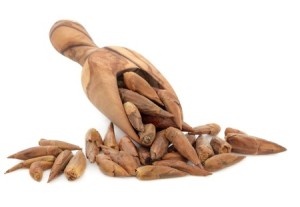Hepatitis Hostages

In September of 2014, Gilead Sciences announced a deal with seven Indian drug companies to produce less expensive generics for their blockbuster Hepatitis C drug, Sovaldi. Gregg Alton, an executive vice-president for Gilead said: “This announcement is a game-changer. . . . The great thing is we are making this medication available to millions of people around the world.” Alton also said: “Gilead is working to make its chronic Hepatitis C medicines accessible to as many patients, in as many places, as quickly as possible.” The medication could be on the market in India by the third quarter of 2015. The licensing deal will cover 91 countries, which have an estimated 100 million people living with Hepatitis C. But the cost to Americans and the profits to Gilead for Sovaldi are through the roof.
Through the third quarter of 2014, Gilead has made $8.6 billion in profit from Sovaldi (see info here, here, and here.)—most of it from American sources. It is on schedule to exceed $10 billion in sales for 2014. This is largely because of the extreme cost differential of Sovaldi to Americans. The charge to US patients is $1,000 per pill; $84,000 for a full 12-week course of treatment with the drug. In June of 2014, Forbes contributor Robert Glatter reported that Gilead was offering Sovaldi at a 99% discount to countries like Egypt and India. The production cost for Sovaldi is somewhere between $130 and $150 per pill. Gardiner Harris of the New York Times reported that Gilead will introduce the drug in India for around $10 per pill.
Rohit Malpani, of Doctors Without Borders, observed that: “Gilead’s licensing terms fall far short of ensuring widespread affordable access to these new drugs in middle-income countries, where over 70 percent of people with hepatitis C live today.” Gregg Alton said that Gilead would provide middle-income countries with discounted prices for Sovaldi. “Pricing for Thailand, Mexico or Brazil will be very different than the U.S. price.”
As early as the spring of 2014, concern was that the cost of Sovaldi in the U.S. would lead to a huge rise in healthcare costs. There are over 3 million potential customers with Hepatitis C in the U.S. PharmExec.com reported in April that a large insurer, United Health Group, reported a decline in its first-quarter earnings, in part because it spent more than $100 million on hepatitis C treatments. In July, the Senate Finance Committee informed Gilead it was launching an investigation into the pricing of Sovaldi.
Given the impact Sovaldi’s cost will have on Medicare, Medicaid and other federal spending, we need a better understanding of how your company arrived at the price for this drug.
Gilead defends the price, citing the eventual cost savings over time. “The value of a cure … is underestimated in terms of the overall advantage that the health care system receives from it.” Yet some organizations are suggesting that treatment be withheld until the condition is more serious. The problem with that is determining how far Hepatitis C has progressed can be difficult. And there is evidence that early treatment means there is a better chance of curing Hepatitis C. Also, early treatment can avoid damage to the liver from the virus.
Withholding treatment is already a reality in the California prison system. The chief pharmacy officer of San Francisco’s Public Health Department said that if they used their entire drug budget for the year, they could only treat 24 or 26 of the 108 inmates estimated to be infected with Hepatitis C. “It’s crazy. It’s just insane. And that’s where this whole conversation about price becomes important, because at what cost?” Nationwide, at least 500,000 inmates have chronic Hepatitis C. The net costs of their treatment alone could exceed $30 billion.
Now Gilead Science has had a new treatment for Hepatitis C approved—Harvoni. It is a combination of Solvadi and the NS5A inhibitor ledispasvir. Harvoni is “the first once-daily single tablet regimen for the treatment of chronic hepatitis C genotype 1 infection in adults.” The FDA granted Harvoni a Priority Review and Breakthrough Therapy designation because of its potential to offer a major advance in treatment over available therapies. Nezam Afdhal, a principle investigator in the Harvoni trials said: “For the first time, the vast majority of patients can be cured with a once-daily pill in only eight or 12 weeks.”
The cost of Harvoni will be $94,500 for a full 12-week course of treatment. But that is roughly in line with the previous cost of Sovaldi and the drugs used with it. “Many patients should be able to take Harvoni for only eight weeks, at a cost of about $63,000.” The shorter time period can be considered for treatment-naïve patients without cirrhosis.
But the cost is still too high for many insurance companies and Medicaid programs, who are restricting the use of Sovaldi to the most seriously ill patients. Some are requiring patients to demonstrate they have not abused alcohol or illicit drugs for a number of months or limiting the treatment to “once-in-a lifetime.” Dr. Steven Miller, the chief medical officer of Express Scripts, which manages pharmacy benefits for employers and insurance companies, said: “Their budgets just are not going to be able to tolerate it.”
The small population argument justifying a high cost of drug treatment (to motivate the drug’s development) like that used for drugs like Acthar and Soliris doesn’t apply to Sovaldi and Harvoni. If every American with Hepatitis C was treated with Sovaldi, the cost would be $250 BILLION! Treating everyone on the planet would cost $14.28 TRILLION. “To put those numbers in perspective, the U.S. spent about $381 billion on prescribed medicine last year.” Gilead defended the cost of the medicine, saying: We believe the price of Harvoni reflects the value of the medicine.” The Motley Fool suggested that Harvoni could generate as much as $12 billion in its first full year on the market.
Even when factoring in the negative impacts of competition, shortened treatment durations, and the need for additional approvals, Harvoni should still double the marijuana industry’s 2018 revenue forecast by this time next year.
Gilead Sciences announced its third quarter financial results for 2014. Gilead’s total revenues for nine months ending on September 30th was $17.25 billion. This compared to $7.76 billion for the same period in 2013. $7.33 billion of the $8.6 billion in sales of Sovaldi for 2014 was made in the U.S. market.
Plain and simply, the American health care system and Americans with Hepatitis C are being held hostage by Gilead Sciences. In their pursuit of record-breaking profits from Sovaldi and Harvoni, Gilead is creating a health care crisis by refusing to negotiate a more reasonable cost to Americans. See my previous articles, “Is There No Balm in Gilead?” and I Guess I’m a Little Bit Socialist,” for more on Gilead Sciences and Sovaldi.


